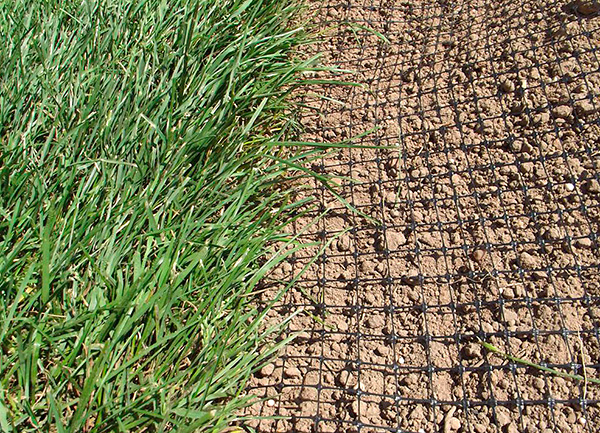
As practice shows, the net from moles is in most cases the best way to protect the site from these animals, and in terms of efficiency, safety and ease of use it surpasses almost all other methods of fighting moles. And the main advantage of anti-mole nets is that, with proper use, their reliability as a mechanical barrier means is very high.
However, even when using lawn nets, it is not always possible to obtain the desired result. But, it would seem, everything is simple: we lay the grid to a depth of about 5-10 cm, or we dig along the perimeter of the site to a depth of 80 cm - and voila, you can forget about moles.
But in reality, not everything is so simple, and it may be necessary to take into account a number of important nuances that are not written in the instructions, but without taking them into account, the entire result from the use of the grid can be nullified. And we will talk about this a little lower ...
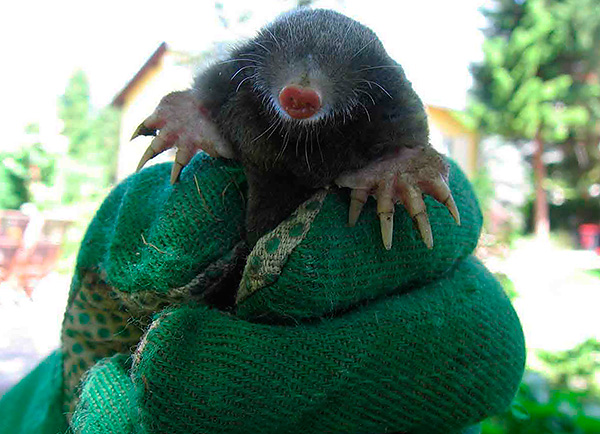
Feedback
“For three years, moles literally mowed all our efforts to make a normal lawn and flower garden. It seems that there are no places to look for them, but then bam - and in the middle of the sown area a lot grows. His wife turned the alpine hill as a volcano exploded. And what to do? Last winter I couldn’t stand it; I closed the three sides of the site, which are facing the neighbors and the road, with a fence, and I did the foundation specifically for moles. According to the standards, 40 cm is enough, I made 60, because they are unlikely to crawl like that. I spent it, but I tried for the site. He closed the fourth side with a net. He called the trencher and made a trench 20 cm wide and 80 cm deep, laid a mesh with a mesh of 25x25, released the rest up (another half meter turned out). Every two meters he put pipes 2 meters high, they stuck 1.20 above the ground. The base of the pipes was concreted. He fell asleep, pulled another net between the pipes - this is a normal fence. He blew up the top layer of 20 cm from the lawn, laid a special net from moles, and bought it in Leroy Merlin. Put the lawn in place. All. It's August, no one else to see. It turned out expensive, but it’s worth it, the wife again managed to make an alpine hill. ”
Maxim, Moscow
Options for laying the grid over the area and digging it around the perimeter
The net against moles performs an exclusively barrier protective function in the area. She does not scare away moles, does not kill them, but simply does not allow animals to move to a fenced area:
- making its move and getting outside to the border of the site, the mole stumbles upon the grid, unsuccessfully tries to get around it and, as a result, remains outside the site;
- if the mole is already on the site and is trying to dig a passage to the surface of the earth, then he, again, stumbles on a grid and is forced to go again deeper underground.
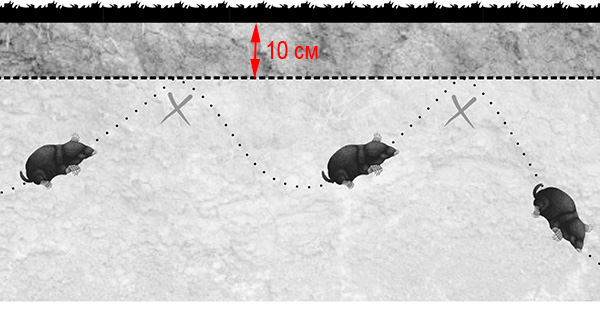
To protect the cottage or the garden from the penetration of moles from the outside, the grid is buried vertically in the ground around the perimeter of the entire plot. This option is optimal for relatively small private estates with an area of up to 20-30 acres. If they already have fences (with a deep solid foundation) from one or several sides, or the road adjoins from either side, this makes the task even easier - only those sides will have to be covered with a grid, where there is a risk of moles from neighboring territories.
On a note
In practice, it sometimes happens that moles do not penetrate into sites whose owners have the opportunity to build full-fledged fences with a continuous strip foundation, even if the foundations of these fences are not very deep. Moles in such cases are affected, first of all, by unprotected neighboring areas, the owners of which neglect at least some barriers and expect to scare away moles, for example, rotten fish or cat urine.As a result, everyone gets what they are counting on: some - a clean, well-kept area with a fence, others - a garden dotted with rotten fish and poured with cat urine (often also covered with beer cans on reinforcement bars).
It is important to keep in mind that if moles are already present on the site and it is decided to restrict only to installing the mesh around the perimeter (that is, do not lay it additionally over the entire area), then at about the same time that the mesh is installed, the animals themselves must be caught and taken out the boundaries of the site. Otherwise, they will continue their wrecking activity in the fenced area.
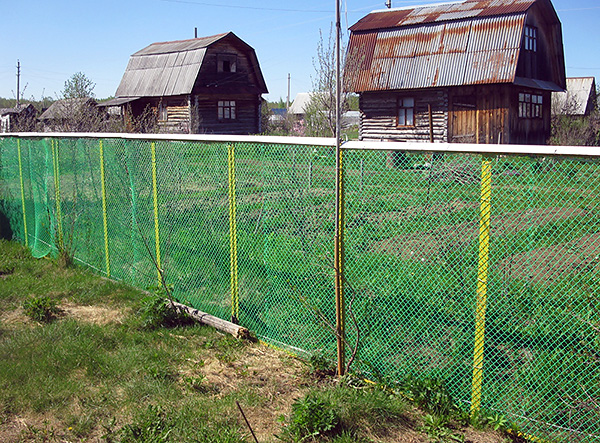
Important
You need to install the grid on all sides of the site along which there are no roads, the foundation of the fence or other obstacles for moles. Many summer residents argue this way: moles, most likely, come from the side of the forest or field, which means that it is just this side that is covered with a net to protect the site.
This approach has two weaknesses: “most likely” does not always correspond to reality, and even if it does, very active, active and moving moles often manage to bypass the grid (sometimes even on the surface of the earth during the period of settlement). Therefore, the grid only on one side of the site will not save if the others are not covered by anything.
Another option is to lay the lawn mesh horizontally on the protected area to a depth of about 5-10 cm underground. In this case, the mole, making a move, rises up to throw out the ground, bumps into the net, tries to tear it or go around it, cannot do this, and as a result leaves either again deeper underground, or to the side, reaching the edge where the grids no, that is, outside the territory protected by the net.
This method is especially often and successfully used to protect lawns on which deep planting is not planned. It is the horizontally laid net that protects golf courses and decorative lawns in parks from moles.
The photo below shows an example of laying a lawn net:
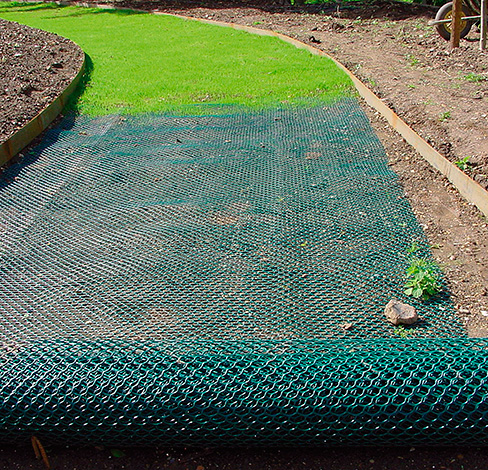
The disadvantage of this method is that the mole can lay fodder passages even above the net if it is laid too deep (judging by the reviews of summer residents, the mole is sometimes quite enough 10-15 cm of soil). In addition, a mole that is not very high-quality mesh can simply break, and can also crawl at the junction of the mesh. In addition, mice and other rodents in the area often gnaw holes in the net, thereby facilitating moles exit to the surface.
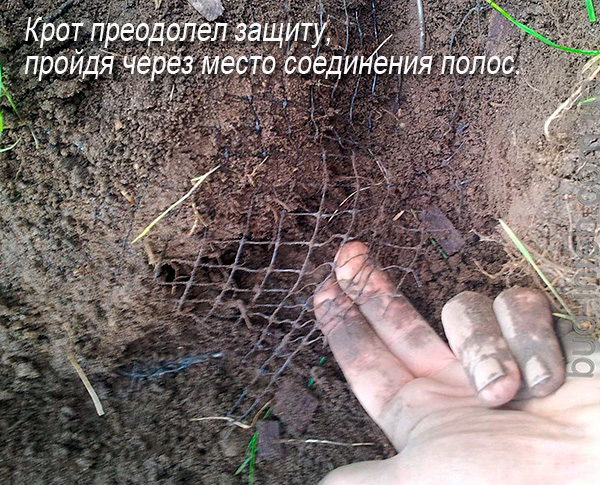
It should be borne in mind that this option is not always suitable for gardens and flower gardens, where the grid will interfere with agricultural work.
On the other hand, this method of protecting the site from moles has a lot of advantages: a horizontally laid grid strengthens the soil, preventing the displacement of its upper layers (which is especially important if the lawn is on a slope), helps to level the terrain and prevents the formation of bald spots on the lawn.
Feedback
“We have no problems with moles at all. Although we have their sea in the fields, there are thousands of molehills on the field around the village, even more than even land. My plot is located 300 meters from the field, but there has never been a mole on it. Even when it was being built, on the side of the road and a neighbor, he put stone fences with a foundation of 90 cm, this is enough. He also made a trench from two other sides and pulled a fine net 90 cm down and 110 above the ground. I bought everything in Ob. Here they say that you need to dig in for 40 cm, but in fact this is not enough, I have 90 from all sides, moles around the hordes, and I've been living on the site for 12 years and have not seen a single one. So you need to think about it right away, even before the problem appears. ”
Yaroslav, Odessa
Some summer residents try to enclose a grid of individual small areas in the area where harmful work of moles is most undesirable.In principle, this method may be justified from the point of view of cost savings, but there are additional problems with the formation of the aboveground part of the fence: for the net to protect against moles, it needs to be removed at least 20-30 cm above the ground so that the animal can’t just get through it on the surface. As a result, metal grilles and mini-fences appear on the site, which do not always improve the landscape design of the territory.
Sometimes people even try to plant bushes and young trees in baskets or in pits fenced with a net - they say so that moles do not gnaw at the roots. Here it must be clarified that moles do not gnaw the roots of trees and bushes. Rodents damage them - voles (especially water), rats and various insects, all of which move quite comfortably along the surface of the earth, and insects through any mesh of baskets, so for true root pests such pseudo-barriers are not an obstacle.
So, if you need to protect the summer cottage from the moles as efficiently as possible, then the grid needs to be dug vertically along the entire perimeter, and in addition to this (if the means allow) to lay it horizontally on the maximum possible area.
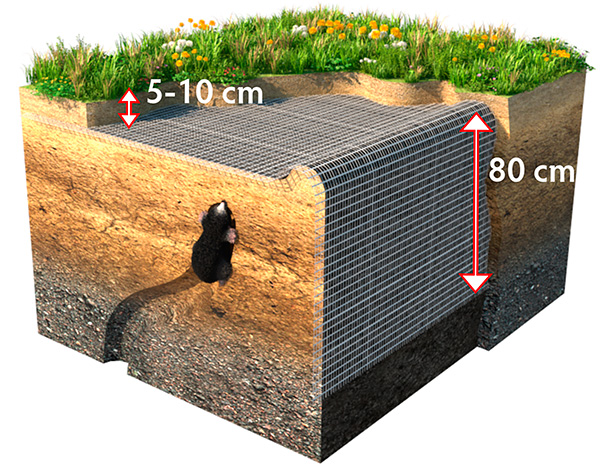
Now let's talk about how to choose a set from moles, since not all of them are equally effective, reliable and durable ...
All types of nets from moles and which one is better to choose
Against moles, a mesh with a mesh of not more than 25x25 mm, preferably 15x15 mm, should be used. For example, a standard chain-link will not create any obstacle for animals - a medium-sized mole will easily squeeze through a mesh 55x55 mm wide.
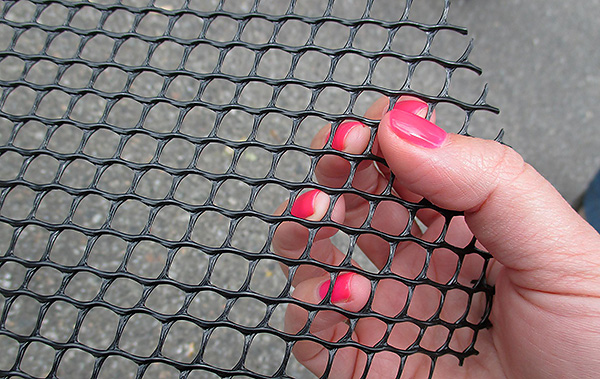
Many stores today sell special nets and grilles from moles; they are easy to buy not only in Moscow and St. Petersburg, but also in small cities. If you still can’t find a grid for sale, then you can use universal building nets for the same purpose, they usually turn out to be cheaper.
Optimal for protection against moles, plastic lawn nets made of polypropylene. They are very durable, they are not damaged when exposed to environmental factors (rain, frost, soil microorganisms, etc.), and if the net is of high quality, then moles cannot break it.
Metal nets are much less preferred. In just a few years, they can so rust that they can no longer fulfill their protective function.
If the grid is dug vertically, then its height above the ground should be at least 20-30 cm, although usually summer residents prefer to make a full-fledged fence more than 1 meter high.
Of the plastic nets specially made for protection against moles, the following options are on sale:
- Lawn 1 (article G-8), mesh size 8x6 mm, roll size - 1x10 m, 2x30 m. The price of a roll 2x30 m - about 8-10 thousand rubles, production - Premium, Russia;

- Lawn 1/1 (article G-9), mesh size 9x9 mm, roll sizes are the same, a roll of 1x10 m costs a little more than 1000 rubles, and 2x10 m - about 6000 rubles, production - Premium, Russia;

- Syntoflex, mesh size 12x14 mm, roll size - 2x100 m, roll price - about 13-15 thousand rubles, production - Tenax, Italy.

As practice shows, the Italian grid is not only the most economical, but also the most durable and reliable, although it looks thinner. The video below shows its benefits.
Interesting video: which anti-mole mesh is better
However, thick nets also protect, so the effect will still be, just such protection will be somewhat less reliable.
Grids Premium with a mesh of 35x35 mm should not be used already - a young mole can squeeze through such a mesh.
Feedback:
“We have a worm net Lawn-1 is under the whole lawn. It lies very well, and no infection has ever damaged the grass. Sometimes moleholes appear in the garden, one or two moles live there constantly, but they cannot get out onto the lawn.And this despite the fact that we did not bury the net, but simply laid it on the ground and rammed it. In my opinion, she was worth 15 thousand rubles, and the rink was also taken there. This is the best defense for us so far. ”
Irina, St. Petersburg
Instructions for installing (laying) the grid
In the ideal case, the grid should be installed as a solid wall around the perimeter of the site even at the stage of its settlement and construction, before the moles appeared here and before the garden or flowerbed begins to form here. This rule is ignored by most gardeners and summer residents: many rely on the Russian "maybe", and when the moles turn the licked and fertilized flower garden into a tank training ground - then they start to deal with the problem.
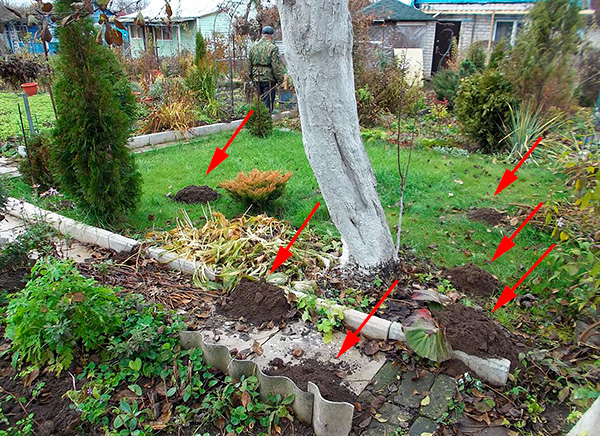
So if in your case the opportunity has not yet been missed, it is better to protect your site in advance and exclude the very possibility of moles getting on it.
Vertical installation of the grid around the perimeter of the site is carried out in the following sequence:
- A trench 20-30 cm wide and 70-80 cm deep is dug up along the entire length of the sides to be protected. It is extremely difficult to do this manually, usually they solve the problem by calling a chain trencher;
- A mesh is placed vertically at the bottom of the trench. With a roll width (and, consequently, a grid height) of 1 m, it will protrude from the trench by 20-30 cm;
- Docking of two rolls is done with an overlap of a width of at least 10 cm, at the junction of the canvas, they are attached using brackets;
- The trench is filled up, the earth is rammed;
- It is useful to mark a grid sticking out of the ground with white sticky tapes so that you do not accidentally stumble on it.
On a note
Nets sold in rolls with a width of 2 m, when placed vertically, can be cut lengthwise to get a twice as long fence.
There are two options for horizontal laying of the lawn net from moles. The main option is as follows:
- The top layer is removed from the entire lawn to a depth of 7-10 cm;
- If necessary, backfilling is made of sand or gravel (this does not apply to protection from moles, but is done to drain or strengthen the lawn itself);
- The mesh is laid, when joining the paintings an overlap of at least 10 cm wide is made, the mesh is attached to the ground with metal brackets;
- Then the layer removed from the lawn is laid back.
Another option is a simple laying of the mesh on the surface of the site and pressing it into the ground. As long as there is no grass on the lawn, the net is visible, but as the cover develops, it hides under the grass. This option requires significantly less effort to protect the lawn, but prevents the appearance of moles as reliably as when digging the net to a shallow depth.
Often a lawn net is laid on already grown grass - over time, the grass grows in the mesh, hiding the net in itself (see the example in the photo below).
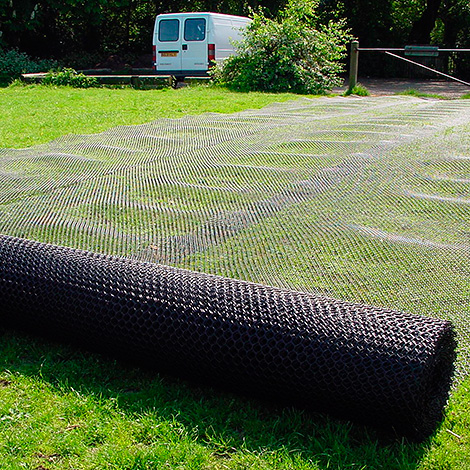
On a note
The average diameter of the mole hunting passages is only 4-5 cm, the passages themselves are usually located at a depth of 5-10 cm. Therefore, sometimes the animals dig tunnels safely over a net buried to a depth of 10-15 cm or more. Therefore, the closer the grid is to the surface of the earth, the more reliably it will protect from pests.
As mentioned earlier, mice and rats are ways to damage plastic lawn nets. In this case, summer residents often get the impression that the mole does such damage - in fact, the moles do not try to cut through the net, they only try to tear it. Be that as it may, without additional struggle in the area with mice and rats, the reliability of the protective effect of anti-mole nets can decrease over time.
Grid price: estimated purchase and styling estimates
Approximate prices for a roll of net from moles were indicated above. Let's now figure out how much the full cost of installing such a grid on the site will cost. We will carry out calculations based on the price of the Italian Syntoflex - this grid is quite economical and reliable.
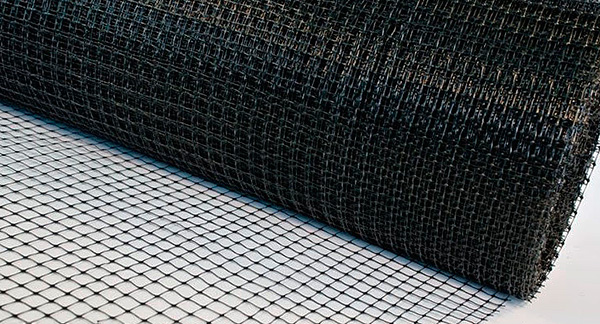
If you enclose a site with an area of 10 acres (25x40 m) around the perimeter, then the main costs will be:
- Mesh roll - 13,000 rubles;
- Digging a trench - 14,000 rubles (the price for a full shift of work is indicated, although usually a trench cutter of this length makes in 4-5 hours);
- The remuneration of workers who cut the grid, install and fill the trench - 10,000 rubles.
Total, it turns out 37,000 rubles for all the work. At the same time, 70 meters of a grid 1 m high will still be on hand. The unit cost of installing the grid will be 300 rubles per meter of the border of the site, the price of one grid alone will be 65 rubles per meter of the protected border.
You can save money by laying the net and filling the trench yourself, as well as negotiating with the cutter about the hourly pay or pay for the footage of the trench. In addition, these works can be combined with the installation of foundation columns for a mesh or slate fence, which will save money on both works in total.
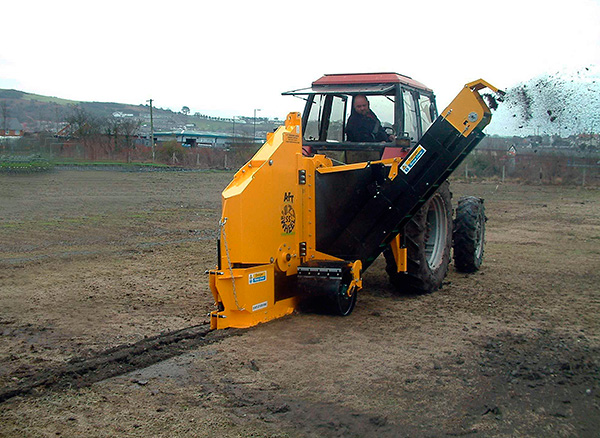
Feedback
“We have been fighting moles for so long, it has already begun to seem that this struggle will be endless. We catch them, but they climb anyway. We poison, and then new ones come, it does not work to scare them away. In the end, they decided to enclose themselves. Along the three fences in the spring they dug trenches (manually dug, the tractor cannot drive into the site), bought a net for protection against moles, G-9, put it in, buried it. They made such an overlap that the net rests directly on the fence and the mole above it does not get on the ground. This was the first year when moles did not harm the site. That's all, the long-standing saga is over. I remember what happened before, and I understand that we spent more money on all these repellers and traps than on the net. And how many nerves there were, how many spoiled flowers! ”
Tatyana, Minsk
If the worm net is laid horizontally, then the cost of the work will depend on the rates for raising the soil and laying it on top of the grid. The grid itself costs 65 rubles per square meter of surface to be protected. If you lay it on top of the lawn without digging in, then, in general, this will be the unit cost of all materials per square meter.
Is it possible to replace the grid with slate, roofing material or other barrier means?
The economic summer resident may immediately have questions: is it possible to replace the net from moles with something more economical?
Let's see which options are the most popular:
- Slate - a sheet of wave slate costs 190 rubles, its dimensions are 1.12 x 1.75 m. If you cut each sheet in the middle, you will get 2 sheets with a total length of 2.2 m and a height of 87 cm (in principle, sufficient to protect against moles). The price per meter of protection is 86 rubles. - more expensive than the Italian grid, but cheaper than the domestic one;


- Ruberoid - suppose we use rolls 1 meter wide and 10 meters long, the price of such a roll is about 500 rubles. The price of 1 m will be 50 rubles. It is important to understand that roofing material does not provide reliable protection against moles, since the animal can tear it with its strong clawed paws and crawl into the hole.

Other options - boards, crushed stone, metal sheets, strip foundations - are always more expensive than the grid at both cost and installation cost. They are conveniently used when the summer resident has large old stocks of such materials or cheap illiquid assets.
It is important to remember that all means, except the net, complicate the migration through the boundaries of the site not only of moles, but also of other soil inhabitants, often very useful and necessary on the site (and earthworms are far from the only example). If the site is large (more than 10 hundred parts), then this is not critical, since soil biocenoses on it are restored themselves, and migration occurs including on the surface of the soil, above the fence. But in small areas, such continuous barriers can lead to a noticeable depletion of the diversity of soil organisms.
In some cases, it may not be possible to discount the deterioration of moisture removal from the site if it is fenced from all sides with slate sheets. After heavy rainfall or snowmelt, the entire area may turn into a swamp, the boundaries of which are outlined by a slate or roofing material protruding above the surface of the earth.
How to do without fencing the site?
What to do if you need to protect yourself from moles, but there is no desire and (or) opportunity to spend tens of thousands of rubles on this?
For example, you can buy the simplest mole catcher pipe and catch moles with it, take them out of the site and let them out. You can even not buy anything and catch moles in a makeshift trap-hole.
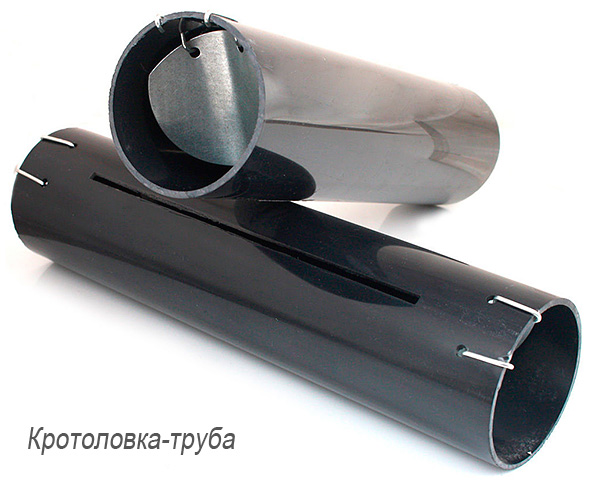
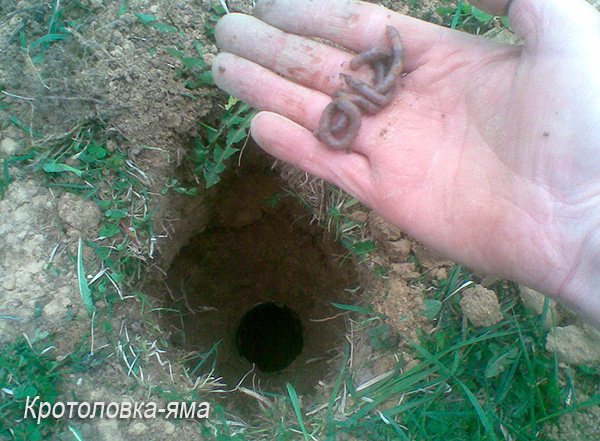
However, without additional measures, this will provide only a temporary lull, since fairly quickly (after several months) new moles will penetrate from the surrounding areas with a high probability, and they will have to be caught again. Therefore, it is advisable to combine the capture of moles with the use of repelling agents: you can use purchased mole repellers, or alternative means, which, when used correctly, also sometimes give a good effect.
Read more about ways to scare away moles and important nuances regarding this process, read in other articles on our website.
If you have personal experience using lawn nets to protect the site from moles, be sure to share it by leaving your review at the bottom of this page. Did you manage to achieve the desired result, what problems did you encounter, which grid was used - all this will be of great interest to those who are just going to use the grid from moles in their area.
How to choose a grid from moles and protect it with a flower garden in the area
Example of laying on the lawn of an Italian anti-mole net Tenax

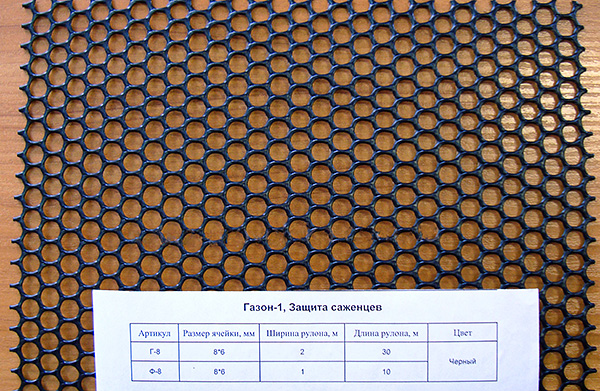
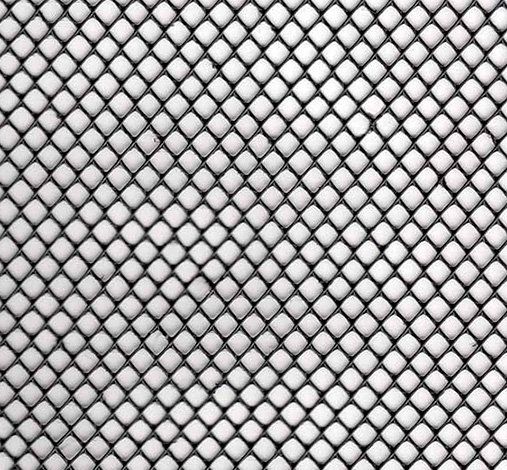
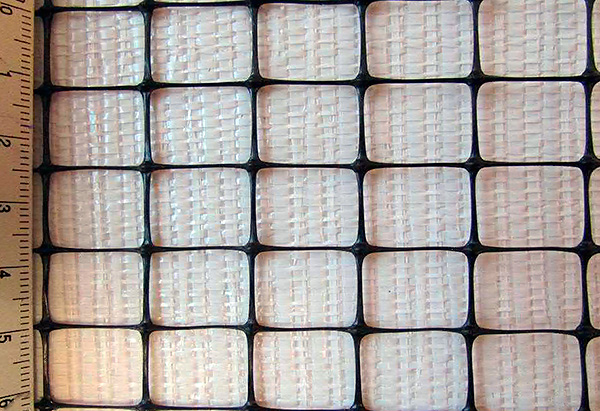
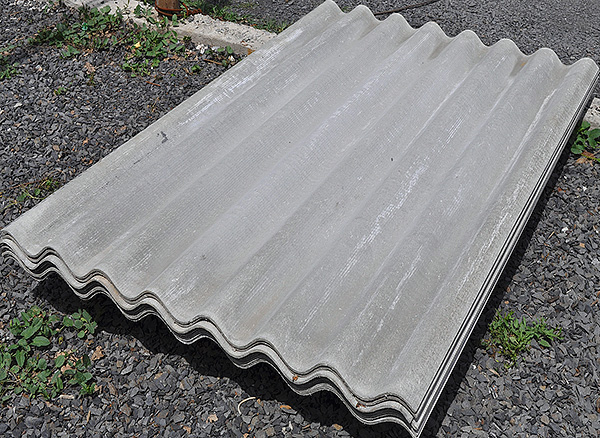
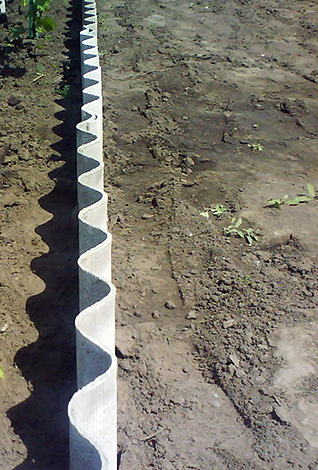
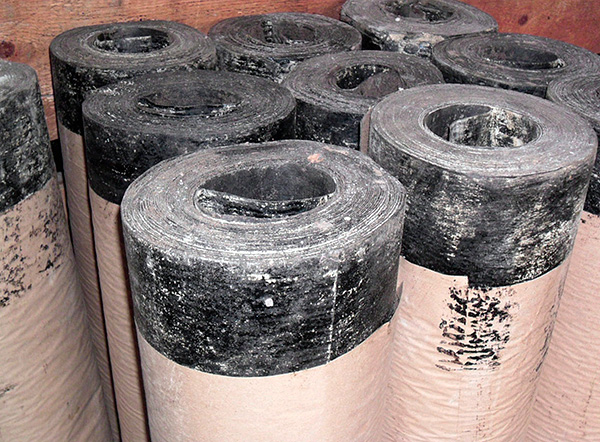

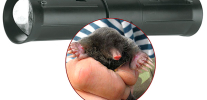
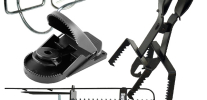
It is well described how summer residents to get rid of moles. But how can we, moles, get rid of all of you, from newcomers summer residents?
You can choose a simple chain-link according to the characteristics, so that the moles do not crawl into the cell, and dig it in. Cheap and for a long time.